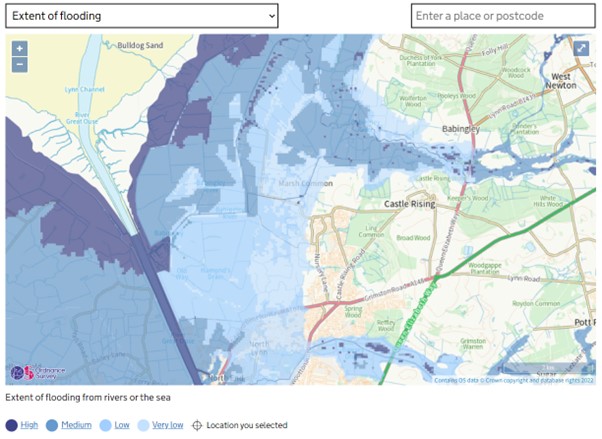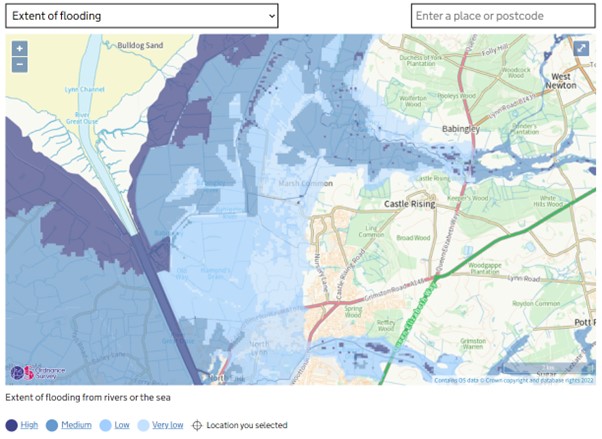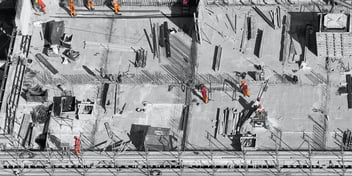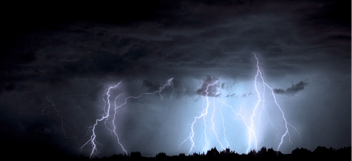In the current climate creating an adverse weather contingency plan is very important. This is also known as a bad weather contingency plan. All organisations should be putting thought into these plans.
What is adverse weather?
Adverse weather comes in all shapes and sizes and can impact your project in myriad ways. Wind is likely to be a constant worry for jobs operating cranes that help with critical lifts.
Concrete pours might be delayed due to temperature variations. Your earthworks will face delays because of wet weather, possibly because the site is flooded, or the ground is saturated and heavy machinery can't move around.
Of course, construction companies have faced weather risk problems since the first day they started building structures. It's a risk inherent to the nature of the work.
The best operators will have put in place an adverse weather contingency plan to mitigate this risk and keep their project on track. The contingency plan is a crucial step in successful weather risk management.
What should be in your adverse weather contingency plan?
A contingency plan for adverse weather should always start with an accurate risk assessment of the weather you will actually be facing. This means accurate data.
If you can get your hands on accurate data to help you understand what has happened in this location then this is the basis for your contingency plan. This data should be hyper-local and ideally has been adjusted with topography and climate data to ensure you aren't relying too heavily on high level data.

Checking on the government website for flood risk for example is a good place to start for one of the key risks in the UK.
Find more about UK Government Flood Risk Maps.
Once you have your understanding of the weather you need to assess how this is actually likely to impact the project you are working on. This needs to be tailored to your situation so you can have the most accurate picture possible of how and where you could be exposed to weather risk.
Starting by listing out all the activities you expect to have the highest impact is a good start, but ideally you would look at any activity where weather risk is a possibility. Even accumulated minor risks can become something bigger once delivery of the project begins. Detail is what makes a bad weather contingency plan most effective.
You will have time risk allowance baked into your plan through your contract. However, this is not a safety net, it's a margin that you should use to get the most from your job. An effective adverse weather contingency plan can be a tool that helps you keep a healthy profit margin on your job and deliver your client a project on time and with good value for money.
With your list of impacted activities in hand you can start the filtering process. Which of these activities could you mitigate? Is there some action that can be taken ahead of time that will lead to this risk being drastically lowered or removed entirely? Perhaps you realise that you can get the job done with a shorter crane, which will limit risk and actually save you money on the rental too.
Maybe you can see in the data that winters in this location don't get cooler until later and trends are working in your favour. So that critical concrete pour you thought might need to happen in the following year can be brought forward. All of these types of decisions are decisions that can be enabled with good weather risk management using the EHAB enhanced planner and with good data and thoughtful planning.
So you've mitigated as much weather risk as you can?
Now the bad weather contingency plan needs to be put in place. Start to build a list of potential ways each activity could go wrong in the face of particular weather events and then start to note down ways you could avoid the impacts of those events were they to transpire. This kind of scenario planning isn't easy, but with the foresight to do this not only can you be ready, but you can be sure that your client will recognise this readiness too.
The plan is something that you should keep to hand. It should be something that in the event these risks occur you can take action as quickly as possible. Especially in the most extreme cases. When heavy rainfall is scheduled this is the time to batten down the hatches and get your material and equipment out of any flood risk zones you have identified. Doing this in time could save the materials, it could save the effort and cost of an insurance claim and it could help get your programme back on track once the water recedes.
Some elements of this plan might be to have certainty over the risk pot you want to set aside. This is the money you have set aside for exactly this kind of issue. It's possible that some risks can only be fixed after the fact. If this is the case then having this money set aside is the final part of your adverse weather contingency plan.
This acts as your own little insurance pot against small risks you are happy to deal with. At the extreme end of the scale you may need to bring in alternative types of insurance, if you have identified some key extreme risks you aren't willing to take on. See our article on parametric insurance here.
Technology and your bad weather contingency plan
With weather becoming more extreme and unpredictable the need for an adverse weather contingency plan is greater than it ever has been.
However, thanks to modern technology these don’t have to be an added burden to your workforce. Leverage a tool like the EHAB weather risk enhanced planner and you can get all the data and insight needed to understand your risks. If you do identify extreme risk that you are unwilling to take, then you can purchase some parametric cover that will automatically payout in the event of an extreme event happening.
If you have already created an adverse weather contingency plan we’d love to chat with you to hear more about your experiences dealing with extreme events. You can get in touch with us via our contact form here.




